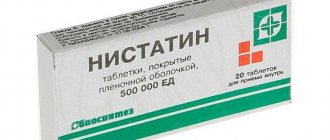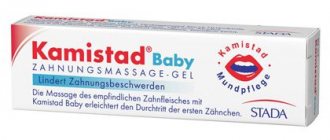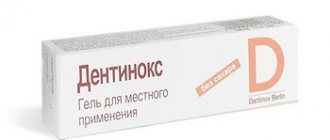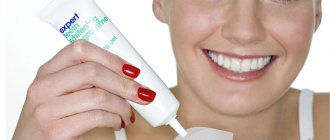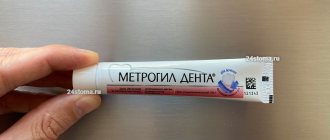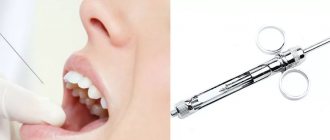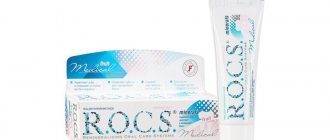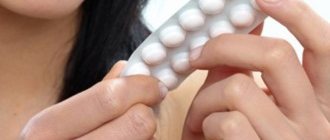Skin damage and wounds are always unpleasant. What can we say about trophic ulcers - companions of severe varicose veins, which are characterized by very sluggish and slow healing due to impaired tissue nutrition. Solcoseryl can help heal such difficult lesions, as well as burns, frostbite, and eye damage.
- Solcoseryl ointment as a face cream
- How to use Solcoseryl and Dimexide for wrinkles
Compound
The composition of 1 ml of solution for injection includes 42.5 mg of the active substance solcoseryl (deproteinized dialysate from the blood of dairy calves) and water for injection as an auxiliary component.
1 g of eye gel contains 8.3 g of the active substance solcoseryl (deproteinized dialysate from the blood of dairy calves) and auxiliary ingredients: sodium carboxymethylcellulose, sorbitol, water for injection, benzalkonium chloride.
1 g of Solcoseryl ointment contains 2.07 mg of the active substance solcoseryl (deproteinized dialysate from the blood of dairy calves) and a number of auxiliary components: methyl parahydroxybenzoate, propyl parahydroxybenzoate, cetyl alcohol, cholesterol, white petrolatum, water for injection.
Description of the drug
Solcoseryl is a universal stimulator of tissue regeneration. The drug is obtained through calf blood dialysis (molecular crushing followed by removal of protein compounds). The main area of application is restoring the integrity of the skin after mechanical and thermal damage. The medication helps with the following problems: burns, ulcers, scratches, abrasions, pimples, acne, etc.
Solcoseryl - detailed instructions for using ointment and gel
Regardless of the form of release of the drug, the principle of influencing problem areas of tissue is common: the components protect affected and healthy cells, saturate them with oxygen; activate regeneration and repair reactions, stimulate the synthesis of new tissues at the cellular level, increase the intensity of the formation of collagen compounds.
As for the differences, the ointment differs from the gel in the composition of auxiliary ingredients and the concentration of the active substances a.
Pharmacological action and group
Solcoseryl belongs to the group of biogenic stimulants. The drug is identified in several pharmacological groups:
- reparants and regenerants;
- microcirculation correctors;
- antioxidants and antihypoxants.
The pharmacological action of the drug indicates its versatility - cytoprotective, membrane stabilizing, angioprotective, wound healing, antihypoxic and regenerating. These properties allow the drug to quickly solve the most complex skin problems.
The main active ingredient of the drug is deproteinized dialysate, as well as a number of auxiliary ingredients. Their main effect is to optimize aerobic metabolism and normalize oxidative phosphorylation reactions. As part of the in vitro studies, the following properties of the pharmaceutical product were established:
- activates collagen synthesis;
- stops inflammatory processes, accompanying reactions, prevents their spread to healthy tissues;
- increases the intensity of regeneration and repair in affected areas;
- normalizes intracellular nutrition, including after oxygen starvation.
After applying the medicine in a thin layer to the surface of the damaged area of the skin, the composition protects cellular structures and promotes their rapid recovery and regeneration.
Composition and release form
The active component of the drug, regardless of its form, is an extract from the blood of mammary bodies. So what is the difference between gel and ointment? – In the concentration of the main substance and auxiliary ingredients.
The ointment composition includes a number of minor components:
- injection purified water;
- medical Vaseline;
- cholesterol;
- cetyl alcohol.
Auxiliary ingredients of the gel:
- injection water;
- propylene glycol;
- sodium carboxymethylcellulose;
- calcium lactate.
Both forms of the drug are supplied in aluminum tubes of 20 g. Each “tube” of the pharmaceutical product is in a separate cardboard package, complete with annotation and instructions for use.
pharmachologic effect
Solcoseryl is a medicine that affects mainly metabolic processes in tissues. They activate tissue metabolic processes, improve trophism and stimulate tissue repair and regeneration when exposed to damaging factors.
Solcoseryl in injection form belongs to the pharmacotherapeutic group of hemodialysates and hemofiltrates, ointment and jelly - to the category of drugs used to treat wounds and ulcers (including poorly healing ones), gel - to the category of drugs used to treat ophthalmological diseases.
What kind of medicine is Solcoseryl?
The drug has a beneficial effect on tissue metabolic processes. It improves tissue nutrition in case of damage, and also activates repair and regeneration processes.
Solcoseryl in injection form is used for extensive circulatory disorders (diseases of peripheral veins and arteries, strokes), ointment and jelly are used to treat ulcerative lesions and slow-healing wounds, and the gel is an ophthalmic agent. Thus, each of the release forms performs its own task of restoring damaged tissue.
The rate of absorption and distribution of the drug in the body, as well as the route of its elimination, cannot be determined by methods usual in pharmacology due to the characteristics of the active substance.
According to the results of a study of the drug on animals, the pharmacological effect develops within half an hour after the bolus injection. The therapeutic effect lasts for 3 hours.
Pharmacodynamics and pharmacokinetics
The main component of Solcoseryl preparations are fractions of the blood of calves with natural low-molecular substances included in their composition, the molecular weight of which does not exceed 5000 daltons.
To date, its properties have only been partially studied. In vitro tests, as well as preclinical and clinical studies, have shown that calf blood extract:
- promotes the restoration and/or maintenance of aerobic metabolism and oxidative phosphorylation processes, and also ensures the replenishment of cells that do not receive sufficient nutrition with high-energy phosphates;
- in vitro enhances the utilization of oxygen and activates the transport of glucose into tissues and cells suffering from hypoxia and metabolically depleted;
- helps improve repair and regeneration processes in damaged tissues that do not receive sufficient nutrition;
- prevents the development or reduces the severity of secondary degradation and pathological changes in reversibly damaged cells and cellular systems;
- in in vitro models activates collagen synthesis;
- has a stimulating effect on the proliferation (reproduction) of cells and their migration (in in vitro models).
Thus, Solcoseryl protects tissues that are in a state of oxygen starvation and nutritional deficiency, and accelerates the processes of their restoration and healing.
Solcoseryl eye gel is a dosage form that was developed specifically for the treatment of damage to the stroma of the cornea.
The gel-like consistency of the product ensures its uniform distribution on the cornea, and good adhesive properties allow it to remain on it for a long period of time. The use of eye gel accelerates the restoration of damaged tissues and prevents scarring.
The rate and extent of absorption, distribution, as well as the rate and route of elimination of the active substance from the patient’s body cannot be determined using conventional pharmacokinetic methods, since protein-free calf blood extract has pharmacodynamic effects that are characteristic of molecules with different chemical and physical properties.
In the process of studying the pharmacokinetic characteristics of Solcoseryl solution in animals, it was found that after a bolus injection, the effect of the drug develops within half an hour. The effect lasts for three hours after administration of the solution.
Solcoseryl anti-wrinkle ointment: reviews
Sometimes patients use Solcoseryl facial ointment for cosmetic purposes to get rid of wrinkles.
The logic here is clear - since the drug increases the proliferation and activity of fibroblasts and leads to an increase in collagen production in damaged skin tissues (in wounds), then its regular use should probably lead to an increase in collagen production in healthy, undamaged skin. However, when using Solcoseryl ointment for wrinkles, reviews from cosmetologists indicate the absence of an anti-aging effect. The fact is that the drug affects the production of collagen and the proliferation of fibroblasts exclusively where the skin tissue has been damaged. As soon as the process of tissue restoration ends (and the young granulation tissue that has arisen at the site of damage turns into mature connective tissue), the effect of the drug stops.
However, long-term use of Solcoseryl ointment for the face (given the content of a fatty substance in it) can moisturize the skin, making it a little more elastic. But this does not occur due to an increase in collagen content, but due to a fatty film on the surface of the skin, which prevents the evaporation of moisture and therefore makes the skin a little more hydrated. At the same time, in patients with acne, the ointment can also cause an exacerbation of acne and pimples (due to the Vaseline content).
To stimulate collagen production in aging skin, the following 2 types of products are most effective (for arguments and clinical studies, see the links below) –
- products with retinoids,
- fractional lasers.
Recommendation: if you are looking for a cream both to improve skin regeneration and to significantly increase its hydration, a good option would be the “Bepanthen for dry skin” cream. It contains 5% dexpanthenol (a precursor to vitamin B5, which enhances regeneration), as well as well-moisturizing components such as the emollient “lanolin” + “D, L-pantolactone”. Apply 2 times a day, including on the moving parts of the eyelids. After a single application, moisture remains throughout the day. The cost is only 950 rubles per 100 ml tube.
Indications for use
Solcoseryl injections - what are they for and what groups of patients are they prescribed for?
Solcoseryl in ampoules is indicated for patients who have been diagnosed with occlusive peripheral artery disease of the third or fourth degree according to the Fontaine classification and who have contraindications or intolerance to other vasoactive drugs.
It is also prescribed to patients with chronic venous insufficiency , which is accompanied by the formation of treatment-resistant trophic ulcers , as well as to patients with disorders of cerebral metabolism.
What is Solcoseryl ointment and jelly for?
The use of ointment and jelly is advisable for the treatment of minor injuries (for example, abrasions or cuts), frostbite, first and second degree burns (thermal or solar), difficult-to-heal wounds (for example, trophic skin disorders of venous etiology or bedsores ).
Indications for use of eye gel
Solcoseryl eye gel is recommended:
- for the treatment of mechanical injuries and erosive damage to the cornea and conjunctiva;
- to accelerate the healing processes of postoperative scars in the postoperative period (for example, after a cornea transplant, surgery to remove a cloudy lens, surgical treatment of glaucoma , etc.);
- for the treatment of burns of the cornea of various origins (thermal, chemical or radiation);
- for the treatment of ulcerative lesions of the cornea and keratitis of various etiologies;
- for dystrophic lesions of the cornea of various etiologies, including neuroparalytic keratitis , endothelial-epithelial dystrophy ( bullous keratopathy ), etc.;
- for the treatment of corneal xerophthalmia with lagofatalmos (non-closure of the palpebral fissure);
- to improve the tolerability of contact lenses and reduce the time of adaptation to them.
Indications for use of Solcoseryl dragees
The drug in the form of pills is taken to treat trophic and radiation ulcers , bedsores , gangrene , and chronic venous insufficiency . They are also prescribed to patients with gastric and duodenal ulcers and to patients who require skin and/or corneal grafting procedures.
Contraindications
Administration of the solution is contraindicated in patients with known hypersensitivity to calf blood dialysates. The solution is also contraindicated for atopy and for persons allergic to milk.
Since the ointment, jelly and solution contain derivatives of parahydroxybenzoic acid , which are used as preservatives, as well as trace concentrations of benzoic acid in free form, it is not used in the presence of allergic reactions to the above substances.
Ointment and jelly should be prescribed with caution to persons with a predisposition to allergic reactions.
A contraindication to the use of eye gel is hypersensitivity to its components. Since the eye gel can cause temporary visual impairment, you should not drive a car or operate potentially dangerous machinery for half an hour after its use.
Side effects
Administration of Solcoseryl IV or IM in very rare cases (their frequency does not exceed 0.1%) provokes the development of allergic or anaphylactic reactions, which are most likely caused by class E immunoglobulins.
If body temperature rises, urticaria , swelling and hyperemia at the site of drug administration, the use of Solcoseryl is stopped, and symptomatic treatment will be prescribed to eliminate the symptoms that appear.
Since the solution contains potassium, its administration may cause pain at the injection site.
When using Solcoseryl cream, a short-term burning sensation may be felt at the site of application. Discontinuation of the drug is required only in cases where the unpleasant sensation does not disappear for a long period of time.
In isolated cases, the use of jelly and ointment can cause the development of allergic reactions. If allergy symptoms appear, the use of these products should be discontinued.
Toxicological studies of Solcoseryl eye gel have shown the high safety of this drug when used for its intended purpose in accordance with the instructions.
After instillation of the product, a short-term burning sensation and mild irritation may be observed, which are not reasons for stopping treatment. Repeated instillations in rare cases provoke the development of allergic reactions (a similar effect is also observed during treatment with other ophthalmic drugs for topical use).
Instructions for use of Solcoseryl (Method and dosage)
Solution for injection, instructions for use
In cases where the patient's condition allows, the drug is recommended to be used in the form of an injection solution diluted at least 50:50 with saline or glucose solution.
Solcoseryl in ampoules is intended for slow administration in the form of intravenous injections or infusions. If intravenous administration is not possible, the drug can be injected into the muscle.
Since the drug in its pure form is a hypertonic solution, it should be administered slowly.
For intravenous infusion, the drug should be pre-diluted with 0.25 l of 0.9% NaCl solution or 5% glucose solution. Solcoseryl solution is administered intravenously by drip. The rate of administration depends on the hemodynamic status of the patient.
Patients with occlusive disease of peripheral arteries of the third or fourth degree according to the Fontaine classification are shown daily injection into a vein of 0.85 g (or 20 ml of undiluted solution) Solcoseryl.
The duration of use is usually up to four weeks and depends on the clinical situation.
Patients with chronic venous insufficiency , which is accompanied by the formation of treatment-resistant trophic ulcers , are indicated for intravenous administration of 0.425 g (or 10 ml of undiluted solution) Solcoseryl three times a week.
The duration of the course of treatment should not exceed four weeks (it is determined depending on the nature of the disease).
To prevent the appearance of peripheral venous edema , therapy is supplemented by applying a pressure bandage using an elastic bandage. If the patient has skin trophic disorders, treatment is carried out by combining injections or infusions of Solcoseryl solution with the use of jelly, and then ointment.
Patients who have suffered ischemic or hemorrhagic stroke are prescribed daily intravenous administration of 0.425 or 0.85 g of Solcoseryl (10 or 20 ml of undiluted solution) as the main course. The duration of the main course is 10 days.
Further treatment involves daily administration of 85 mg (or 2 ml of undiluted solution) Solcoseryl for one month.
In severe forms of brain contusions, daily injection of 1000 mg of Solcoseryl into a vein (corresponding to 23-24 ml of undiluted solution) is prescribed for 5 days.
The drug is administered intramuscularly undiluted at a dose of 2 ml/day.
Solcoseryl jelly and ointment: instructions for use
Cream and ointment are intended for application directly to the wound surface. Before using these dosage forms, the wound is first cleaned using a disinfectant solution.
Patients with trophic ulcers , as well as in cases of purulent infection of wounds, require preliminary surgical treatment before starting treatment.
When using jelly and ointment for frostbite , as well as for treating ulcers and skin injuries, it is important to remember that only sterile dressings should be used to treat damaged areas.
The gel is intended for application to fresh (including wet) wounds and weeping ulcers. The product is applied in a thin layer to a previously cleaned wound surface two or three times a day.
To treat areas where epithelization has begun, the use of ointment is indicated. The use of jelly is advisable until pronounced granulation tissue begins to form on the damaged surface of the skin and the wound begins to dry out.
The ointment is used primarily to treat dry wounds. The product is applied in a thin layer to a previously cleaned wound surface once or twice a day. If necessary, cover the treated surface with a bandage.
The course of treatment with the drug in this dosage form continues until the wound heals and is completely healed with elastic tissue.
For patients with severe trophic damage to the skin and soft tissues, it is recommended to combine jelly and ointment with the injection form of Solcoseryl.
Experience with the use of jelly and ointment for children is limited.
The drug does not have such release forms as suppositories. However, in the complex therapy of chronic colitis (inflammation of the colon), microenemas with Solcoseryl jelly are often prescribed.
Before use, the jelly contained in the tube (all 20 g) is added to 30 ml of warm water and after the enema procedure, which is carried out to cleanse the intestines, it is administered daily for 10 days.
Solcoseryl eye gel, instructions for use
Unless otherwise instructed by the attending physician, the eye gel is instilled into the conjunctival cavity, one drop three or four times a day. It is recommended to use the product daily until complete recovery.
In particularly difficult cases, eye ointment can be used one drop per hour. If the patient is simultaneously prescribed eye drops and Solcoseryl eye gel, the gel should be applied approximately half an hour after the drops.
During the period of adaptation to contact lenses, the drug is instilled into the conjunctival cavity immediately before installing the lenses and immediately after removing them.
Dragee Solcoseryl: instructions for use
The instructions recommend taking 100 mg tablets three times a day.
Analogs
Solcoseryl is an imported pharmaceutical product, and therefore the cost is often higher than domestic analogues. Among the available substitutes, the following medications deserve special attention:
- "Redecil" is an external remedy for dermatitis, eczema, psoriasis and skin atrophy.
- "Sagenite" is the best drug for the treatment of degenerative changes and violations of the integrity of the dermis.
- "Actovegin" is a popular substitute for Solcoseryl, prescribed for burns, ulcers and wounds, regardless of their etiology.
The patient must remember that a full-fledged substitute or analogue for a specific disease is prescribed only by the attending physician.
special instructions
Studies regarding the safety of using Solcoseryl solution for the treatment of children have not been conducted, therefore the drug is not recommended for the treatment of children under the age of 18 years.
Experience in treating children with the use of eye gel and topical dosage forms of the drug is also limited.
Solcoseryl in ampoules should be administered separately from other drugs (it is especially incompatible with phytoextracts). The exceptions are isotonic 0.9% NaCl solution and 5% glucose solution. It is also not recommended to dilute the product in potassium-containing solutions for infusion.
Eye gels are characterized by the ability to stick to contact lenses, so it is recommended to stop wearing lenses during treatment with the drug.
If allergic reactions associated with the use of the drug occur, you should immediately report them to your doctor. If the drug is used to treat an infectious disease of the cornea, therapy is supplemented with the prescription of appropriate antimicrobial agents.
Avoid contact of the gel with soft contact lenses as it may discolor them.
If necessary, treatment with Solcoseryl can be supplemented with antibacterial, vasodilating and other drugs.
Solcoseryl in cosmetology: for the face, hands, rough elbows and heels, for the skin around the eyes
In medicine, Solcoseryl preparations are used to accelerate the healing of damaged skin; in home cosmetology, they are used as a remedy for acne, stretch marks, and wrinkles. They are used to soften the skin, increase its turgor, improve complexion and eliminate acne .
In cosmetology, the ointment can be used as a stand-alone product (it is applied pointwise to problem areas, in the form of a mask once a week before bedtime and two to three times a week on the skin around the eyes), or in combination with other products, in particular with the drug Dimexide . Let's look at how to use these medications together.
For the face, Dimexide and Solcoseryl are used as follows: on the face, neck and décolleté, previously cleaned with peeling agents (you can also do alkaline peeling using tar soap, salt and soda), apply a solution of Dimexide with water, prepared in a ratio of 1:10 (enough dilute 5 ml (teaspoon) of Dimexide in 50 ml of water); Before the product has time to be absorbed, Solcoseryl ointment is applied to it in a thick layer.
If the gel is used in cosmetology, then the mask should be periodically sprayed with thermal water (you can also use regular water through a spray bottle). The mask is left on the face for about half an hour to an hour, then washed off and a light hypoallergenic cream is applied to the skin.
According to women who have tried this mask recipe on themselves, Solcoseryl ointment is more comfortable for the face than gel (after application, you don’t have to wash it off, just remove the residue with a napkin). In addition, it is not recommended to use a gel mask more than once a month.
Used as a remedy for wrinkles around the eyes, Solcoseryl ointment has proven itself to be a very effective remedy. Applying it like a regular cream, within a week you can see that the number of wrinkles and wrinkles has decreased, the skin has tightened and smoothed, and its color has become fresher and healthier.
Dimexide and Solcoseryl are no less effective against wrinkles, and perhaps even more effective. This is due to the ability of Dimexide to enhance the penetration of the active substance of drugs deep into the tissue. After using these products in combination, skin irregularities and imperfections disappear, and the effect of the mask is comparable to the effect of Botox .
The gel and ointment can also be used to soften rough skin on the elbows and heels. It is best to apply them to problem areas before bed.
Reviews
Lera, 35 years old, Murmansk
Solcoseryl is a regular guest in the home medicine cabinet, because she has verified from her own experience that the ointment effectively eliminates the consequences of thermal burns. The skin recovers very quickly, and no characteristic redness or scars remain on the surface. I plan to use it for wrinkles. Can you share your experience?
Valentina, 43 years old, Stavropol
Lera, don’t even think about applying ointment to your face! Like you, I read a lot of reviews on websites and forums, and then thoroughly treated my nose, forehead, chin and cheeks - all problem areas. I did the mask at night. In the morning the skin was very oily, I had to force it and take a long time to wash it off. My skin dries out around the eyes and around the mouth. I used the ointment for 3 days. When I returned home from work on the 3rd day and took off my makeup, I was simply horrified - my skin had crusted over and became very dry. If you look from the outside, it may seem that you are sick with some serious illness.
Analogues of Solcoseryl
- Aekol
- Acerbin
- Bepanten
- Shostakovsky Balm
- Wundehill
- Depanthol
- Contractubex
- Pantekrem
- Pantexol Yadran
- Panthenol
- Pantestin
- Hepiderm Plus
- Echinacin Madaus
Reviews of Solcoseryl
Almost all reviews left on the forums about injections, eye gel, jelly and Solcoseryl ointment are positive. Rare negative reviews are due largely to the fact that the drug provoked allergic reactions associated with intolerance to its active component.
Reviews of Solcoseryl gel and the drug in the form of an ointment allow us to conclude that these drugs effectively cope not only with minor scratches and minor burns, but also help cure difficult-to-heal wounds and ulcers.
The effectiveness of the ointment in cosmetology is also highly appreciated. Reviews of Solcoseryl ointment for the face indicate that this is truly an indispensable product for those who want to quickly get rid of wrinkles, acne, and simply improve the color and tone of the skin.
Gel is no less effective against wrinkles, but cosmetologists believe that it should not be used as part of masks too often (optimally - once a month). The ointment can be used as a regular cream.
The effectiveness of Solcoseryl against wrinkles increases when combined with Dimexide , which is due to the latter’s ability to improve the penetration of the active substance deeper into the skin.
Solcoseryl ointment: reviews
Reviews of Solcoseryl ointment show that it really helps speed up wound healing. This is especially important for older patients, metabolic disorders and other conditions where the normal rate of healing of injured tissue may be reduced. The fatty components included in the ointment do not allow it to dry out quickly, and therefore the active components of the ointment act for a long time. Also, the fatty film also has a protective effect.
The main guarantee of good reviews is not to apply the ointment to wet and/or infected wounds, and to always antiseptically treat the wound before applying it. For wet wounds (as we said above), only Solcoseryl in the form of a gel is suitable.
Solcoseryl price, where to buy
The price of Solcoseryl gel 20 g in Russia is about 2,600 rubles.
The average price of Solcoseryl in ampoules of 5 ml No. 5 in Ukrainian pharmacies is about 500 hryvnia.
- Online pharmacies in RussiaRussia
- Online pharmacies in UkraineUkraine
- Online pharmacies in KazakhstanKazakhstan
LuxPharma* special offer
- Solcoseryl ointment tube 20g
RUB 2,170 order - Solcoseryl injections/solution for injection (Solcoseryl ampoules) 42.5 mg/ml 5 ml No. 5
RUR 4,780 order
Pharmacy Dialogue
- Solcoseryl gel (tube 20g)Legacy
RUB 2,633 order
show more
Pharmacy24
- Solcoseryl 5 ml No. 5 injection solution Legacy Pharmaceuticals, Sweetseland GmbH, Switzerland
515 UAH. order - Solcoseryl 4.15 mg/g 20 g gel Legacy Pharmaceuticals, Sweetseland GmbH, Switzerland
164 UAH order
- Solcoseryl 2.07 mg/g 20 g ointment Legacy Pharmaceuticals, Sweetseland GmbH, Switzerland
136 UAH order
- Solcoseryl 42.5 mg/ml 2 ml N25 injection solution Legacy Pharmaceuticals, Sweetsland GmbH, Switzerland
919 UAH. order
PaniPharmacy
- Solcoseryl ampoule Solcoseryl injection solution ampoules 2ml No. 25 Switzerland, Legacy Pharmaceuticals Switzerland
950 UAH order
- Solcoseryl gel Solcoseryl jelly 10% 20g Switzerland, Legacy Pharmaceuticals Switzerland
161 UAH order
- Solcoseryl injection solution ampoules 5 ml No. 5 Australia, Legacy Pharmaceuticals Sweetsland GmbH
476 UAH. order
- Solcoseryl ampoule Solcoseryl injection solution ampoules 5ml No. 5 Switzerland, Legacy Pharmaceuticals Switzerland
545 UAH. order
- Solcoseryl jelly 10% 20g Australia, Valeant Pharmaceuticals Sweetsland
181 UAH order
show more
What is the difference between solcoseryl gel and ointment
An inexperienced layman may have the opinion that solcoseryl ointment is no different from the gel. In fact, there is a difference and quite significant.
- The gel contains 4.15 mg of active substance (deprotenized dialysate) for every 1 g of product.
- In the ointment, its concentration of extract from the blood of calves does not exceed 2.07 mg per 1 g of composition.
There are also differences in consistency: the gel has a light texture and a soft, aqueous base, while the ointment is a soft, viscous and greasy dosage form. The thicker composition is designed for prolonged exposure, softening the epithelial layer with subsequent penetration into the lesion. The gel penetrates the problem area almost instantly.
Obviously, each form is characterized by its own components in the composition, which also affects the area of use of medicines. These points must be taken into account when choosing a drug in one form or another.
Rules for choosing a dosage form
To make a final decision as to whether solcoseryl ointment or gel is better, it is important to establish the scope of application of the pharmaceutical product. In simple terms, after consultation with a doctor, the patient must be diagnosed with a certain disease. Taking into account the characteristics of skin damage, the most suitable dosage form is selected.
The ointment is good to use for wounds with positive healing dynamics, without weeping discharge:
- the edges of the problem area are captured by a dry “crust”;
- the surface of the wound is covered with epithelialization;
- thermal burns (up to 2nd degree inclusive), scratches, abrasions and other shallow wounds.
The peculiarity of this form is that it not only promotes rapid wound healing, but also softens new epithelial layers. Due to this, cracks and crusts do not form on the surface. The problem area is covered with a film, which eliminates the risk of the wound drying out.
It is recommended to start treatment of complicated skin lesions with a gel. This is the best option for healing wet wounds, as well as fresh and deep injuries, from the surface of which moisture is actively separated.
Benefits of the gel:
- removes exudate from problem areas;
- activates regeneration processes at the cellular level;
- forms a new layer of connective tissue (relevant in the first days after operations, surgery).
If weeping discharge reappears on the surface of the wound, it is safer to replace the ointment with gel.


